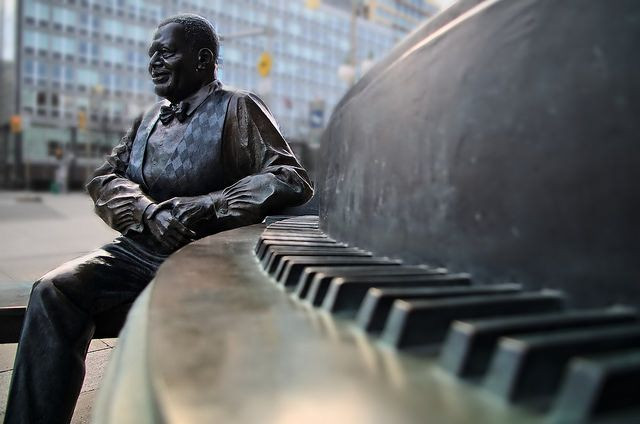Emotion And Creativity: Jazz Improvisation Of Happiness Activates Different Brain Networks Than Sadness

Music, movies, poetry, and other art forms often evoke strong feelings. A new brain scan study explores how emotion influences the creative process by focusing exclusively on one type of artist: jazz pianists. The Johns Hopkins School of Medicine researchers showed that feeling happy, sad, or neutral will influence which parts of the brain's creativity network light up... and to what extent.
"Emotion and creativity are tightly linked," wrote the authors of the study, adding "the neural mechanisms underlying creativity may depend on emotional state." While various researchers have studied brain cell activity during creative tasks, none have directly addressed emotional expression during jazz improvisation. Jazz in particular is extremely flexible, enabling musicians to incorporate a variety of musical features, including tone and rhythm, to express an emotion.
For the new study, the research team used fMRI technology to explore what occurs in the brain during piano improvisations inspired by specific emotional cues. Specifically, the team wanted to identify whether or not a musician's specific emotional motivation would influence which brain systems were involved in her or his creative process.
To accomplish this, the research team showed 12 professional jazz pianists three separate photographs representing a positive, negative, or ambiguous emotion and asked them to improvise separate musical compositions for each. For the positive photo, a woman smiles; for the negative, the same woman appears distressed; for the ambiguous image, she shows no clear feeling.
Within the brain scanner, the pianists improvised music on a keyboard as an interpretation of her emotion in each photo. Meanwhile, the research team, which was led by Dr. Charles Limb, a surgeon and an accomplished jazz saxophonist, observed the activity occurring in each musician's brain.
Different Emotions = Different Brain Cell Activity
What did Limb and his co-researchers see in the scans? The attempt to express a specific emotion significantly altered the musicians' neural circuits. Emotional intention directly modulated connectivity of the amygdala (a brain region linked to emotion) and the insula (a brain region linked to consciousness), the researchers discovered. However, activation or deactivation was not uniform — how the brain lit up was dependent upon the particular emotional state.
For instance, greater deactivation of the dorsolateral prefrontal cortex (DLPFC) occurred during a positive improvisation compared to either a negative or ambiguous improv. Since the DLPFC is the brain region linked to planning and monitoring behavior, the researchers believe greater deactivation likely indicates a musician getting into a 'groove' or 'zone.' Interestingly, the sad improvisations recruited areas of the brain related to reward, suggesting the motivation to express unhappiness through art may follow from a different, though still gratifying impulse.
The supplementary motor area (SMA) was also less active during the positive improvisation than during either the negative or the ambiguous improv.
"The SMA is often active during tasks involving continuous monitoring of the appropriateness of motor output, including rhythmic tapping," wrote the authors, who added the lack of SMA activity "may indicate that positive improvisation induces a deeper state of flow than negative and ambiguous improvisation."
Importantly, the researchers said decreased SMA activity did not simply relate to the level of motor activity, since, on average, the musicians were playing more notes during the positive improvisation compared to either negative or ambiguous.
Overall, each emotional improvisation induced changes in the angular gyrus, precuneus, and perisylvian language areas (along with the changes noted in the DLPFC and SMA). "Within jazz improvisation, certain emotional states may open musicians to deeper flow states or more robust stimulation of reward centers," wrote Limb and his colleagues.
Based on these results, the team speculates the urge to create art may stem from a desire to stimulate these brain regions. Like food, art feeds the mind.
Source: McPherson MJ, Barrett FS, Lopez-Gonzalez M, Jiradejvong P, Limb CJ. Emotional Intent Modulates The Neural Substrates Of Creativity: An fMRI Study of Emotionally Targeted Improvisation in Jazz Musicians. Scientific Reports. 2016.



























